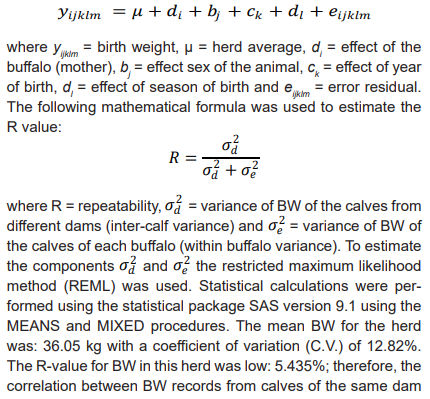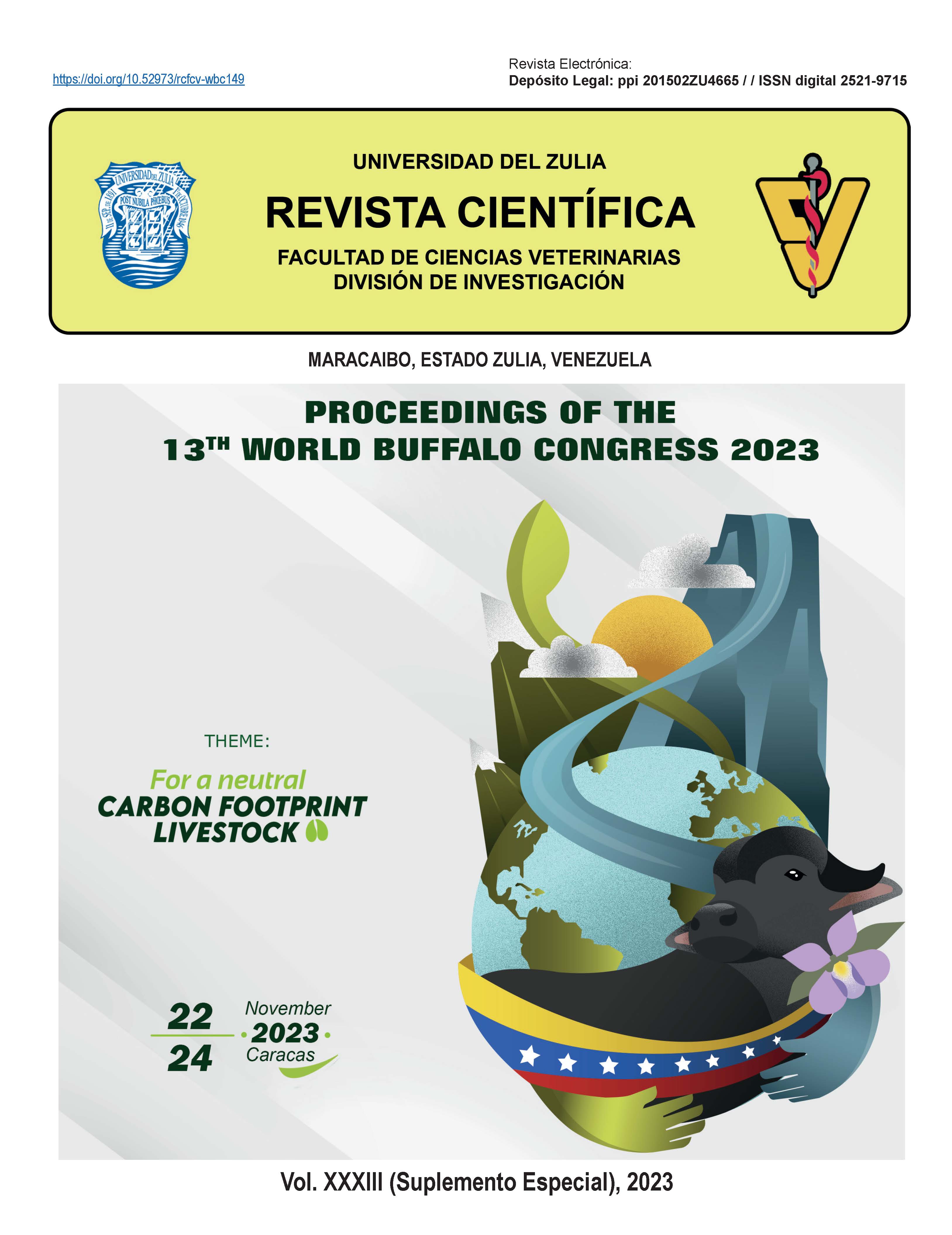Repeatability for weight at birth in Murrah buffaloes in the Zulia state of Venezuela
Abstract
To improve livestock breeding, aspects such as genetic evaluation must be included, and clear objectives must be set for the selection of animals to be future breeders. In this way, the estimation of repeatability (R) and its use in the most probable production capacity allows the detection of the best females, considering their performance and productive life. Birth weight (BW) is a character that has importance in the future performance of the animal. Therefore, strategies should be applied to improve this character. Thus, the application of the calculation of R is a strategy that should be implemented as a genetic improvement strategy; for this purpose, 257 BW records of the offspring of 108 buffaloes of the Murrah breed of the Mega 21 farm located in the Baralt municipality (Menegrande) of Zulia-Venezuela state were analyzed. The calves (birth weight) were weighed in the first 24 hours of the animal’s life. The following linear additive mixed effects model was used to calculate R and its variance components for BW:

is low, suggesting that a large number of data would be needed to evaluate the performance of a buffalo. The fixed effects (sex, season of birth, and year of birth) had a significant effect on BW (p<0.05). In this population, several records of a buffalo’s calves would be needed to correctly predict the BW of a future calf because R is low.
















